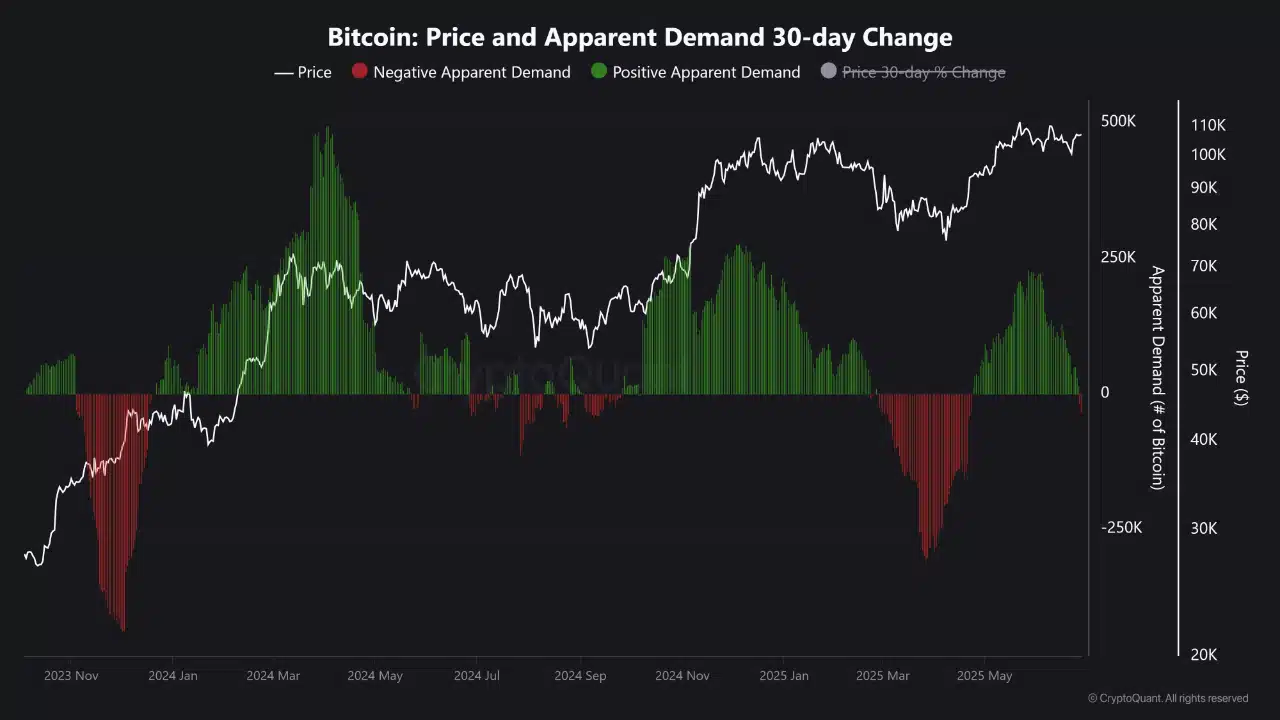Bitcoin at a Crossroads: THESE Critical Metrics Signal an Impending Pullback
Bitcoin's bull run hits a tension point as on-chain data flashes warning signs. The king of crypto faces its first real stress test since the last halving—will traders panic or buy the dip?
Liquidity crunch incoming?
Exchange reserves are drying up faster than a DeFi yield farm in a bear market. Whales have been quietly accumulating while retail FOMO builds—a classic setup for volatility.
Technical breakdown
The weekly chart shows RSI hovering near overbought territory. Meanwhile, the futures market smells blood with funding rates hitting unsustainable levels. (Wall Street analysts would call this 'frothy'—but they still think blockchain is a type of Excel spreadsheet.)
Make or break moment
Either Bitcoin shakes out weak hands here and resumes its march toward six figures... or we get a 20-30% haircut that'll make leverage traders regret their life choices. Place your bets.

Source: CryptoQuant
Are rising miner profits and valuation metrics flashing early warning signs?
At the time of writing, the Puell Multiple jumped 25.73% to 1.26, indicating that miners are now significantly more profitable than usual, often a precursor to increased selling pressure.
Simultaneously, Bitcoin’s NVT Ratio also spiked 84.17% to 55.17, showing that market cap is outpacing transaction volume. This is a common signal of overvaluation.
Together, these metrics suggest that while price remains elevated, underlying network activity and supply dynamics are misaligned.
This imbalance could expose Bitcoin to a pullback, especially if demand fails to absorb coins, miners may soon offload into the market. Caution is advised amid these rising warning signs.

Source: CryptoQuant
Are profitable holders reducing the likelihood of strong support?
As of writing, over 98.82% of UTXOs were in profit, while only 1.17% were in loss, signaling that most holders sit on unrealized gains.
Although this could suggest strength, it also means fewer market participants are incentivized to buy the dip.
Moreover, such a skewed profit/loss distribution often precedes local tops, where profit-taking becomes widespread.
The lack of loss-heavy holders also weakens psychological support zones, making price floors less reliable.

Source: CryptoQuant
Are positive netflows a warning sign for upcoming sell pressure?
At press time, BTC registered a net inflow of $57.5 million—the first notable positive FLOW in a sea of outflows.
Exchange netflows turning green signal that investors may be preparing to sell, as more coins are being deposited onto exchanges.
This shift in exchange activity could indicate a reversal in market sentiment, with holders moving from accumulation to distribution.
Given the backdrop of weak demand and overbought signals, rising exchange deposits could apply additional pressure on BTC’s price if followed by increased sell orders.

Source: CoinGlass
Can BTC rally while active address growth remains bearish?
Despite BTC’s price hovering NEAR $108K, the DAA divergence chart remains deeply red.
This shows that growth in active addresses continues to lag behind price action, signaling that speculative price moves are not being backed by real user adoption.
Historically, negative DAA divergence has foreshadowed corrections, especially when price climbs while address activity stagnates or declines.
The current extended red zone in divergence raises concern that market strength is surface-level and lacks fundamental support.

Source: Santiment
Can BTC sustain its price without real demand?
Bitcoin continues to trade above $108K, but multiple on-chain signals point to growing weakness beneath the surface.
Rising miner profitability, positive exchange netflows, and a surging NVT Ratio indicate increasing sell-side pressure and possible overvaluation.
Meanwhile, negative DAA divergence and a high percentage of profitable UTXOs suggest limited buyer support.
Without a meaningful recovery in demand and network activity, BTC could face heightened volatility and struggle to sustain its current position in the near term.
Subscribe to our must read daily newsletter

